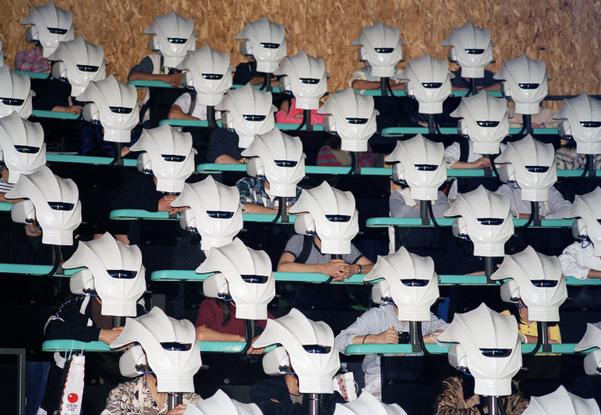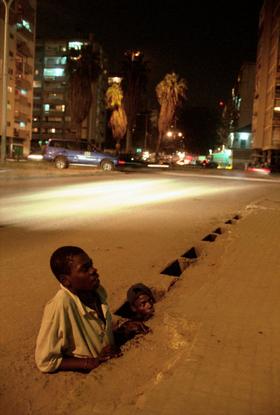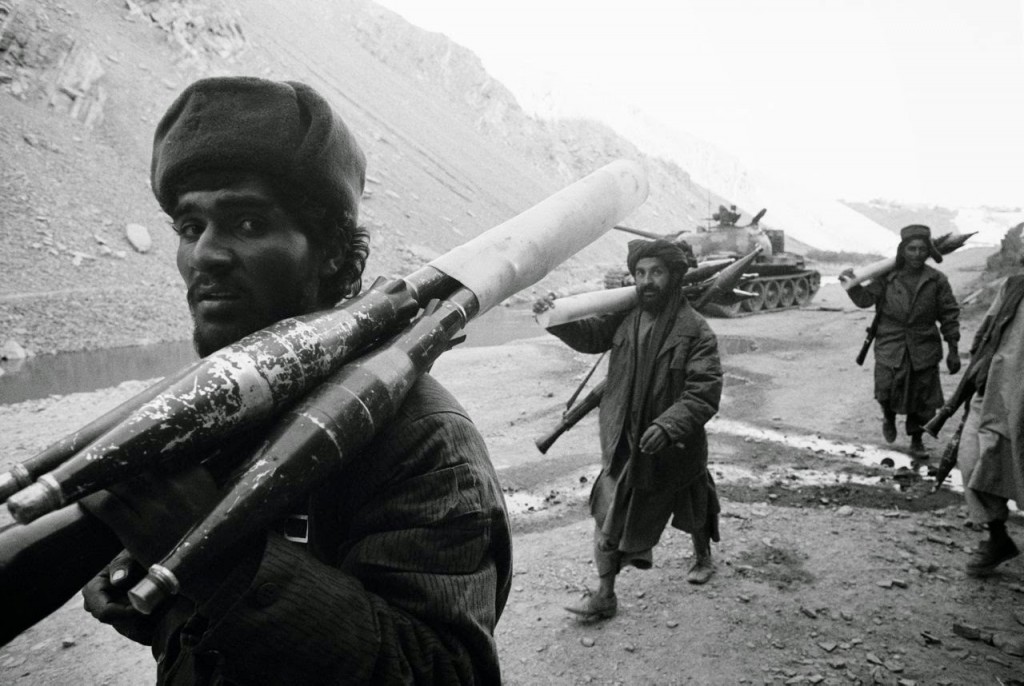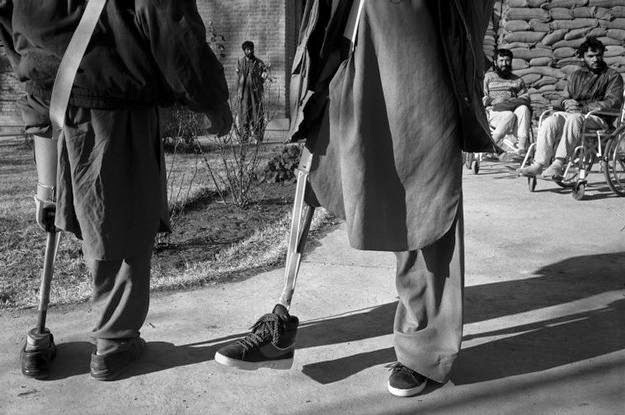Chris Steele-Perkins, Virtual reality display by Subaru, Japan, 1999, Street Children in Luanda, Angola, 1999, Taliban fighters move against Masood’s forces, Afghanistan, 1996 and Trying out artificial limbs at ICRC clinic in Kabul, Afghanistan, 1994
Christopher Horace Steele-Perkins (born 28 July 1947) is a British photographer and member of Magnum Photos, best known for his depiction of Africa, Afghanistan, England, and Japan.
Steele-Perkins photographed wars and disasters in the third world, leaving Viva in 1979 to join Magnum Photos as a nominee (on encouragement by Josef Koudelka), and becoming an associate member in 1981 and a full member in 1983. He continued to work in Britain, taking photographs published as The Pleasure Principle, an examination (in colour) of life in Britain but also a reflection of himself. With Philip Marlow, he successfully pushed for the opening of a London office for Magnum; the proposal was approved in 1986. Steele-Perkins served as the President of Magnum from 1995 to 1998.
Steele-Perkins made four trips to Afghanistan in the 1990s, sometimes staying with the Taliban, the majority of whom “were just ordinary guys” who treated him courteously. Together with James Nachtwey and others, he was also fired on, prompting him to reconsider his priorities: in addition to the danger of the front line:
“you never get good pictures out of it. I’ve yet to see a decent front-line war picture. All the strong stuff is a bit further back, where the emotions are.”
A book of his black and white images, Afghanistan, was published first in French, and later in English and in Japanese. The review by Philip Hensher in the Spectator read in part:
“These astonishingly beautiful photographs are more moving than can be described; they hardly ever dwell on physical brutalities, but on the bleak rubble and desert of the country, punctuated by inexplicable moments of formal beauty, even pastoral bliss… the grandeur of the images comes from Steele-Perkins never neglecting the human, the individual face in the great crowd of history.”
Work in South Korea included a contribution to a Hayward Gallery touring exhibition of photographs of contemporary slavery, “Documenting Disposable People”, in which Steele-Perkins interviewed and made black-and-white photographs of Korean “comfort women”. “Their eyes were really important to me: I wanted them to look at you, and for you to look at them”, he wrote. “They’re not going to be around that much longer, and it was important to give this show a history.” The photographs were published within Documenting Disposable People: Contemporary Global Slavery.



